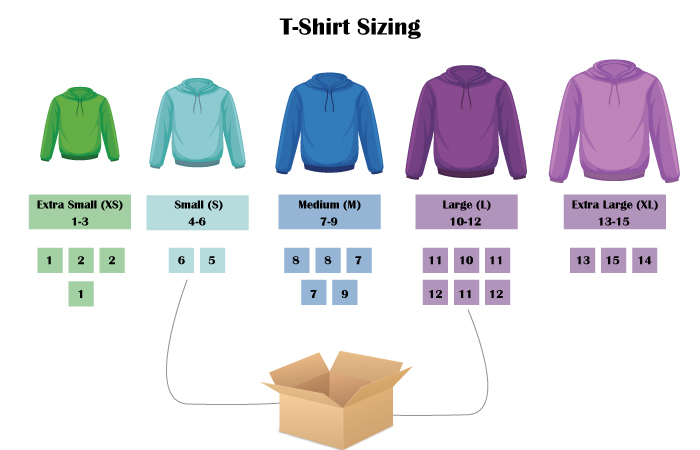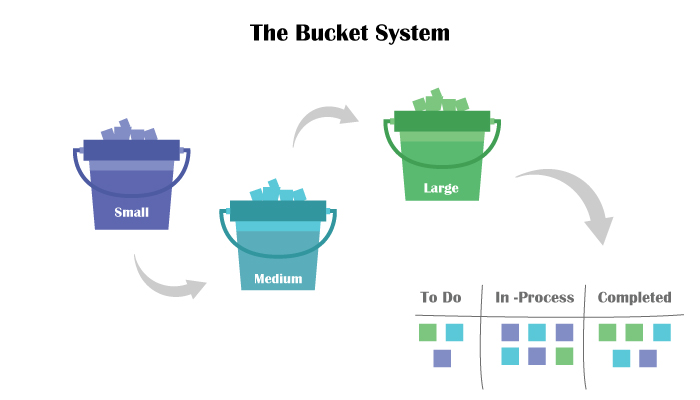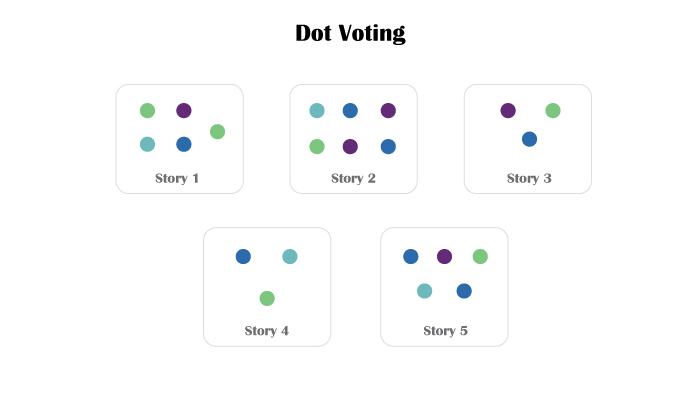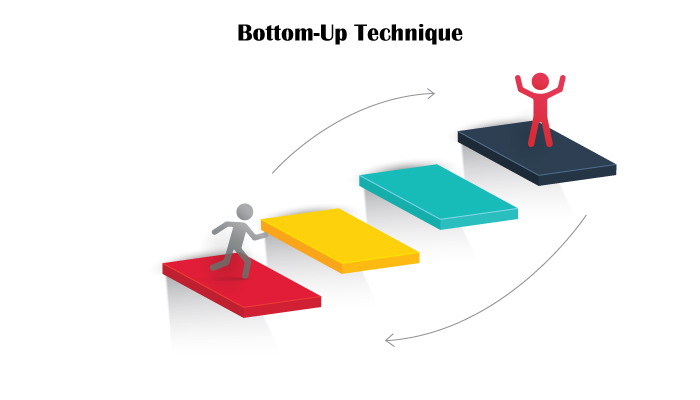Agile software development methodology is quite a popular one used for a variety of tasks. And it is due to this popularity that more and more people are looking for, Agile Estimation Technique.
So, what is it, why people use it, and what are it’s different forms? We shall be answering all of these questions and more in this blog. With this said, let’s get right into it, starting with the basics.
What is Agile Estimation?
When introduced to concept of agile estimation techniques, one of the first question clients ask is, what the heck is agile estimation?
Well, here’s the answer.
Estimation in agile or Agile estimating refers to the practice used in Agile software development methodologies to determine the effort required to complete a task, feature, or project.
Moreover, it is an iterative and collaborative process that aims to provide a realistic estimation of work based on available information and the team’s collective knowledge.
With this said, you might be wondering why do you need to estimate anything in software development? Well, here’s the answer.
Why Run Agile Estimations?
Why do you need run agile estimation? Well, there are various reasons as one might assume.
For instance, it let you make teams accountable for their deliveries. In addition to this, it also helps maintain discipline across agile team.
Furthermore, with the help agile estimation, clients and project manager can predict approximate time i.e. the deadline.
All of this allows better sprint management across the project as well as improved team productivity. And this is why agile estimation techniques are so important.
Truth be told, estimation in agile is not easy at all, bringing us to our next section…
Agile Estimation Can Be Difficult
It goes without saying that there are a lot of project management methodologies. Looking at the traditional ones, they approach the whole estimation under term “bottom-up”.
Here, team speaks time making schedules, plans, mapping out tasks and deliverables.
Following this, methodology breaks down each one and estimate development cost and development time for each one. After this, it’s up to the project manager to keep track of everything.
Moving on to agile project management, things are a lot different here.
In agile estimation techniques, project manager can flip order as well as use gross-level estimation. This allows them to refine the process as more and more information becomes available.
Sounds quite complex, right? Well, it is. And that’s why we have agile estimation techniques
Top Agile Estimation Techniques
In this section of the blog, we shall be discussing some of the top and most commonly used agile estimation techniques. Covering how they work and their use cases. Therefore, with this being said, let’s get right into it, starting with:
1. Planning poker

Imagine a lively poker game where instead of betting money, team members estimate the effort or complexity of a task.
Each team member is given a set of cards with numbers representing relative sizes, such as 0, 1, 2, 3, 5, 8, 13, 20, etc.
Moreover, the team discusses the task, and then simultaneously reveals their chosen card. If there’s a wide discrepancy, the team discusses the reasons behind their estimates and repeats the process until a consensus is reached.
This technique brings the fun and excitement of a poker game to estimation, fostering collaboration and shared understanding.
Use Cases of Agile estimation technique
- Cards unveil estimates, discussions thrive.
- Estimation becomes a game, collaboration comes alive.
2. T-shirt sizing

In this agile estimation technique, tasks are compared to different sizes of t-shirts: extra small (XS), small (S), medium (M), large (L), and extra large (XL). This makes understanding everything that much easier.
Team members assign a t-shirt size to each task based on their understanding of the effort required, complexity, and other relevant factors.
Moreover, This technique provides a quick and intuitive way to gauge the relative size of tasks without getting too caught up in specific numbers.
Use Cases of Agile estimation technique
- Sort tasks effortlessly into sizes like clothes on display.
- Communicate effort swiftly with small, medium, or large at play.
3. The bucket system

Imagine this, a set of buckets labeled with different sizes or levels of effort, such as small, medium, and large.
Then the team places tasks into the appropriate buckets based on their estimated effort.
In addition to this, the agile estimation technique allows for a rough categorization of tasks, making it easier to prioritize and allocate resources.
The buckets can be adjusted to match the team’s specific needs, providing a flexible and adaptable estimation approach.
Use Cases of Agile estimation technique
- Group work items by size, estimates come alive.
- Tasks sorted in buckets, efficiency thrives.
4. Affinity mapping
Think of this technique as a collaborative brainstorming exercise combined with estimation.
Team members write down their estimates for different tasks on sticky notes.
They then group similar estimates together on a wall or board, creating clusters or affinity groups.
Through discussion and collaboration, the team can refine and consolidate the estimates within each group.
Affinity mapping promotes transparency and shared decision-making, as the team collectively reaches a consensus on the estimates.
Use Cases of Agile estimation technique
- Puzzle-like clustering reveals task size trends.
- Sticky notes create visual cues, estimation transcends.
5. Random distribution
This technique introduces an element of randomness to estimation.
The team members write their estimates for each task on slips of paper and place them face down in a container.
The slips are then shuffled, and each team member randomly selects an estimate for each task.
This approach encourages diverse perspectives and helps prevent bias or anchoring effects that can arise from influencing each other’s estimates.
Use Cases of Agile estimation technique
- Sprinkle estimates like stardust, capturing uncertainty’s range.
- Venture into the unknown, randomness brings change.
6. Dot voting

Picture a wall covered in sticky notes, each representing a task.
Each team member is given a certain number of dot stickers or markers.
They then place their dots on the sticky notes representing the tasks they believe require the most effort or are the most critical.
This voting process allows the team to quickly identify tasks of higher importance or complexity, enabling effective prioritization and resource allocation.
Use Cases of Agile estimation technique
- Dots cast votes, consensus attained.
- Prioritize with visual impact, decisions unrestrained.
7. Big, uncertain, small
This technique categorizes tasks into three main buckets: big, uncertain, and small.
The team collectively discusses each task and determines whether it falls into the big category (requiring significant effort and complexity), uncertain category (with unclear or unknown requirements), or small category (relatively simple).
This approach emphasizes the need for open communication and shared understanding while facilitating a high-level estimation of the work involved.
Use Cases of Agile Estimation Technique
- Categorize tasks like wild animals, traits untamed.
- Give heed to big or uncertain, focus unchained.
8. Top-down estimate
This estimation technique starts with an overall project estimate and then breaks it down into smaller components.
The team begins by estimating the effort and complexity of the entire project as a whole.
They then allocate percentages or fractions of the total estimate to different features or tasks based on their perceived importance or complexity.
This top-down approach provides a high-level view of the project and helps guide subsequent estimations at a more granular level.
Use Cases of Agile Estimation Technique
- Expert’s view provides high-level sway.
- Forest’s grand picture, details in delay.
9. Bottom-up estimate

In contrast to the top-down approach, the bottom-up estimation technique focuses on breaking the project down into individual tasks or user stories.
Each task is estimated independently, considering effort, complexity, dependencies, and risks.
These individual estimates are then aggregated to obtain an overall estimate for the project.
The bottom-up approach encourages a detailed analysis of the work involved and promotes accurate estimations at a task level.
Use Cases of Agile Estimation Technique
- Break the task into pieces, puzzle takes shape.
- Dive into specifics, accuracy escapes.
10. Three-point method
This method involves estimating tasks using three values: the most optimistic estimate (best-case scenario), the most pessimistic estimate (worst-case scenario), and the most likely estimate (realistic scenario).
Team members provide input by discussing and agreeing upon these three values for each task.
The estimates are then calculated using a weighted average or another appropriate method.
The three-point method helps account for uncertainties and risks, providing a more nuanced and reliable estimation.
Use Cases of Agile Estimation Technique
- Perspectives intertwine, optimism, realism, and doubt.
- Blend views and expected effort throughout.
Conclusion
This is all you need to know about the agile estimation technique. Now, if you are looking to apply these techniques to your project, it’s recommended that you consult a top app development company.
FAQ
Agile estimation is the process of determining the effort or size of work items in Agile software development. It helps teams plan, prioritize, and allocate resources effectively.
Agile estimation provides valuable information for project planning, resource allocation, and setting realistic expectations. It helps teams prioritize work, identify dependencies, and manage scope effectively.
Some common Agile estimation techniques include Planning Poker, T-shirt sizing, Affinity mapping, Bucket system, and Dot voting. These techniques encourage team collaboration and relative sizing of work items.
Planning Poker is a popular Agile estimation technique where team members use a deck of cards with values representing different effort levels to indicate their estimates. It encourages relative sizing and facilitates team discussions to reach a consensus.
T-shirt sizing is an Agile estimation technique that assigns sizes or labels (such as XS, S, M, L, XL) to work items based on their relative effort or complexity. It provides a quick and high-level estimation without getting into specific numeric values.
Affinity mapping is a technique used to group similar-sized user stories or work items together. The team collaboratively organizes items into clusters, such as small, medium, and large, to gain a better understanding of their relative sizes.
The Bucket system is an Agile estimation technique where items are categorized into predefined buckets or groups based on their size or complexity. The buckets can be represented by ranges of story points or effort levels, providing a rough estimation of work.
Dot voting is a simple Agile estimation technique where team members are given a fixed number of dots or votes to allocate to different work items. It helps prioritize items based on the team’s collective input.
Agile estimation is an ongoing process and typically occurs during backlog refinement sessions, sprint planning meetings, or whenever new work items are introduced. It is recommended to regularly revisit and refine estimates as the team gains more knowledge and insights.
Agile estimates are not meant to be precise predictions but rather provide a relative understanding of effort and complexity. The accuracy of estimates improves over time as the team gains experience and uses historical data to refine their estimations.
Agile estimation techniques are more focused on relative sizing and prioritization rather than fixed dates. However, teams can use velocity and historical data to forecast and make informed decisions about meeting project deadlines.

Niketan Sharma is the CTO of Nimble AppGenie, a prominent website and mobile app development company in the USA that is delivering excellence with a commitment to boosting business growth & maximizing customer satisfaction. He is a highly motivated individual who helps SMEs and startups grow in this dynamic market with the latest technology and innovation.
Table of Contents




No Comments
Comments are closed.